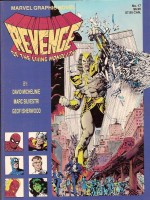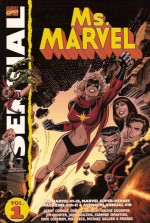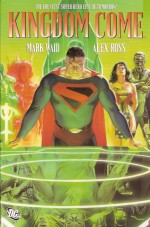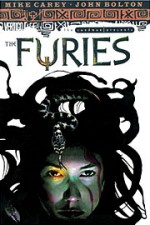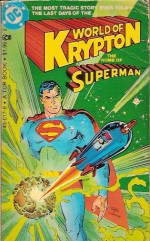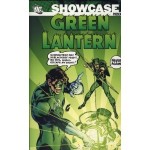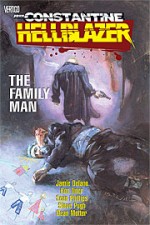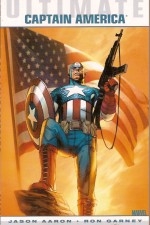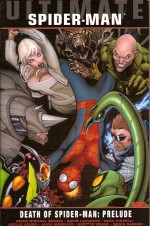New revised Review
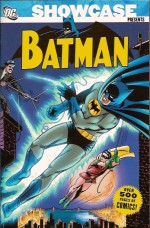
By John Broome, Gardner Fox, Ed Herron, Carmine Infantino, Sheldon Moldoff Joe Giella & various (DC Comics)
ISBN13: 978-1-4012-1086-1
I’m assuming everybody here loves comics and that we’ve all had the same unpleasant experience of trying to justify that passion to somebody. Excluding your partner (who is actually right – the living room floor is not the place to leave your D*&$£! funny-books) many people still have an entrenched and erroneous view of strip art, resulting in a frustrating and futile time as you tried to dissuade them from that opinion.
If so, this collection might be the book you want next time that confrontation occurs. Collected here in incontrovertible black-and-white are tales which reshaped the Dynamic Duo and set them up for global Stardom – and subsequent fearful castigation from fans – as the template for the Batman TV show of the 1960s. It should be noted, however, that the producers and researchers got their creative impetus from the stories of the era preceding the “New Look Batman†as well as the original movie serial of the 1940s…
So what have we here?
By the end of 1963, Julius Schwartz had revived much of DC’s line – and the entire industry – with his modernization of the Superhero, and was asked to work his magic with the creatively stalled and nigh-moribund Caped Crusader. Bringing his usual team of top-notch creators with him, Schwartz stripped down the core-concept, downplaying all the aliens, outlandish villains and daft transformation tales, bringing a cool modern take to the capture of criminals and even overseeing a streamlining rationalisation of the art style itself.
The most apparent change to us kids was a yellow circle around the Bat-symbol, but far more importantly, the stories also changed. A subtle aura of genuine menace had re-entered the comfortable and absurdly abstract world of Gotham City. This initial cheap ‘n’ cheerful Showcase Presents… compendium collects the Bat-Sagas from Detective Comics #327-342 (cover-dated May 1964 to August 1965) and Batman #164-174 (June 1964-September 1965) – 38 stunning stories that reshaped a legend.
The revolution began with the lead yarn in Detective #327, written by John Broome, illustrated by Carmine Infantino and Joe Giella at the very peak of their creative powers, before being fully formalised in two tales in Batman #164.
‘The Mystery of the Menacing Mask! was a cunning “Howdunnit?†that was long on action and peril, as a criminal “underground railroad†led the Caped Crusaders to a common thug who seemed able to control the heroes with his thoughts. The venerable title was clearly refocusing on its descriptive, evocative title for the foreseeable future and to ram the point home a new back-up feature was introduced, “The Stretchable Sleuth†Elongated Man. This comicbook was to be a brain-teaser from now on…
In Batman, action and adventure were paramount. ‘Two-Way Gem Caper!‘ pitted Batman and Robin against a slick criminal named Dabblo, but the villain wasn’t the star of this tale. Almost as an aside, a new Batcave and refashioned Wayne Manor were introduced, as well as a sleek, compact new Batmobile; more sports-car than super-tank.
This story was written by Ed “France†Herron and drawn by “Bob Kaneâ€. Veteran inker Giella was tasked with finishing the contents of all Bat-books in a bid to generate a recognisable uniformity in the stories.
A new semi-regular feature also debuted in that issue. The Mystery Analysts of Gotham City was a club of Detectives and crime-writers who met to talk about their cases. It always resulted in an adventure like ‘Batman’s Great Face-Saving Feat!’ (Herron & Kane) wherein eager applicant Hugh Rankin applied his Private Eye talents to discovering the Gotham Gangbuster’s true identity to win a seat at the sleuths’ table. Suffice it to say he had to reapply…
‘Gotham Gang Line-Up!’ completed the transformation of Batman. Written by original co-creator Bill Finger and pencilled by Kane, this mediocre crime-caper from Detective #328 is most remarkable for the plot-twist wherein long-serving butler Alfred sacrificed his life to save the heroes; prompting Dick Grayson’s Aunt Harriet to move into Wayne Mansor.
From this point the adventures fell into a pattern of top-of-the-line tales punctuated by utterly exceptional occasional epics of drama, mystery and action. These would continue until the infamous TV show’s success became so great that it actually began to inform – or taint – the kind of story in the comics themselves. And while I’m into editorial asides: whenever the credits read “Bob Kane†the artist usually doing the drawing was unsung hero Sheldon Moldoff…
‘Castle with Wall-To-Wall Danger!’ (Detective #329), written by Broome and pencilled by Infantino, was a captivating international thriller which found the heroes braving a deadly death-trap in Swinging England in pursuit of a dastardly thief, whilst eerie science fiction saga ‘Man Who Quit the Human Race!’ (Gardner Fox, Kane & Giella) which led in Batman #165 proved that fantastic fantasy still had a place in the Gotham Guardian’s world.
A potential new love-interest was introduced in the back-up tale, ‘The Dilemma of the Detective’s Daughter!’, courtesy of Herron & Kane, as student police women Patricia Powell left cop-college and hit the mean streets of the city. Over in Detective #330, Broome & “Kane†detailed a new kind of crime in ‘The Fallen Idol of Gotham City!’ wherein a mysterious phenomenon turned ordinary citizens into blood-hungry mobs on command. In Batman #166, ‘Two-Way Deathtrap!’ saw a couple of petty thugs set up the perfect ambush after finding a pipeline into the Batcave whilst ‘A Rendezvous with Robbery!’ featured a return engagement for Pat Powell during a frantic crime caper: both tales from Herron & Kane.
A rare full-length story in Detective #331 guest-starred Elongated Man as the ‘Museum of Mixed-Up Men’ (Broome & Infantino) teamed the Costumed Sleuths against a super-scientific felon, after which a Rogues Gallery super-villain finally appeared in ‘The Joker’s Last Laugh’ (Broome & “Kaneâ€) in #332, utterly set on switching places with the Caped Crimebusters in his own manic manner…
Batman #167 presaged a ‘Zero Hour for Earth!’ (Finger & Kane) as international espionage pulled the Dynamic Duo from Gotham into a global manhunt for secret society Hydra whilst Detective #333 pitted the heroes against a faux goddess and real telepaths in the‘Hunters of the Elephants’ Graveyard!’, written by Fox and illustrated by Infantino.
‘The Fight That Jolted Gotham City! opened Batman #168 with a blockbusting battle between the Masked Manhunter and temporarily deranged circus strongman Mr. Muscles and the Mystery Analysts resurfaced to close the book by explaining ‘How to Solve the Perfect Crime… in Reverse!’ (both tales by Herron & Moldoff).
The opening shot in an extended war against an incredible new foe dubbed The Outsider began in Detective #334 with the introduction of Grasshopper… ‘The Man Who Stole from Batman!’ (Fox & Moldoff), whilst ‘Trail of the Talking Mask!’ by Fox & Infantino in #335 gave the Dynamic Due an opportunity to reinforce their sci-fi credentials in a classy high-tech thriller guest starring PI Hugh Rankin.
Wily, bird-themed bad-man The Penguin returned in Batman #169 to make the Caped Crusaders his unwilling ‘Partners in Plunder!’ (Herron & Moldoff) after which inker Sid Greene made his debut delineating ‘A Bad Day for Batman!’, in which our hero overcame many vicissitudes of cruel coincidence to nab a determined thief.
Detective #336 (Fox, Moldoff & Giella) featured ‘Batman’s Bewitched Nightmare’ and found a broom-riding crone attacking the Dynamic Duo at the Outsider’s behest. In later months the witch was revealed to be sultry sorceress Zatanna, but most comics cognoscenti agree this was not the original plan, but rather cannily back-written during the frantic months of “Batmania†that followed the debut of the TV show (for a fuller explanation check out JLA: Zatanna’s Search).
An intriguing new foe made his mark in Batman #170 when highly professional thief Roy Reynolds ran rings around the Gotham Gangbusters – at least at first – as the ‘Genius of the Getaway Gimmicks!’ (Fox & Moldoff) and Bill Finger provided a captivating, human-scaled drama in ‘The Puzzle of the Perilous Prizes!’ which enabled Joe Giella to show off his pencilling as well as inking skills.
‘The Deep-Freeze Menace!’ (Detective #337 by Fox & Infantino) was a captivating fantasy chiller pitting Batman against a super-powered caveman encased in ice for 50,000 years, whilst the caped crime-buster gained his own uncanny advantage in #338 after a chemical accident threatened to make ‘Batman’s Power-Packed Punch!’ too dangerous to be near…
After an absence of decades ‘Remarkable Ruse of The Riddler!’ reintroduced the Prince of Puzzlers in Batman # 171; a clever book-length mystery from Fox & Moldoff which did much to catapult the previously forgotten villain to the first rank of Bat-Baddies, after which DC’s inexplicable (but deeply cool) long-running love-affair with gorillas resulted in a cracking doom-fable as ‘Batman Battles the Living Beast-Bomb!’ (Fox & Infantino in Detective #339) highlighted the hero’s physical prowess in a duel of wits and muscles against a sinister super-intelligent simian.
Broome returned to script the eerie conundrum drawn by Moldoff which led in Batman #172. ‘Attack of the Invisible Knights!’ proved to be wicked science not ancient magic, whilst Batman’s own technological advances played a big part in the backup ‘Robin’s Unassisted Triple Play!’ (Fox, Moldoff & Greene), which gave the Boy Wonder plenty of scope to show off his own crime-busting skills against a murderous gang of bandits.
Detective #340 saw the long-running war against Batman escalate when ‘The Outsider Strikes Again!’ (Fox & Moldoff), giving further clues to the hidden foe’s incredible abilities by animating everyday objects – and even the Batmobile – to attack the Caped Crusaders, after which Broome & Infantino detailed the cinema-inspired, catastrophic campaign of ‘The Joker’s Comedy Capers!’ in #341.
Criminal mastermind and blackmailer Mr. Incognito offered ‘Secret Identities For Sale’ in the first tale of Batman #173, after which creators Broome and Moldoff were joined by inker Sid Greene for ‘Walk Batman – To Your Doom!’; a sinister psychological murder-plot years ahead of its time.
‘The Midnight Raid of the Robin Gang!’ (Broome & Moldoff) in Detective #342, hinted at the burgeoning generational unrest of the 1960s as the faithful Boy Wonder seemed to sabotage his mentor before signing up with a pack of costumed juvenile delinquents, and this first collection of Caped Crusader Chronicles concludes with the all Fox & Moldoff Batman #174: starting with a brutal story of street-fighting as the Gotham Guardian was ambushed and became ‘The Human Punching Bag!’ before the Mystery Analysts found themselves the intended victims of a “Ten Little Indians†murder-scheme in ‘The Off-Again, On-Again Lightbulbs!’ (inked by Greene).
No matter how much we might squeal and foam about it, to a large portion of the world Batman is always going to be the “Zap! Biff! Pow!â€, affably lovable, caped buffoon of that 1960s television show. It really was that popular.
But whether you tend towards the anodyne light-heartedness of then, the socially acceptable psychopathy of the current movie franchise or actually just like the comicbook character, if you can make a potential convert sit-down, shut up and actually read these wonderful adventures for all (reasonable) ages, you might find that the old adage “Quality will out†still holds true. And if you’re actually a fan who hasn’t read this classic stuff, you have an absolute treat in store…
© 1964, 1965, 2006 DC Comics. All Rights Reserved.

